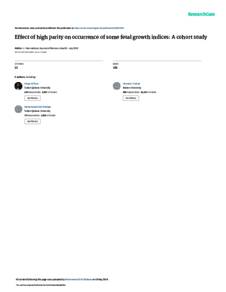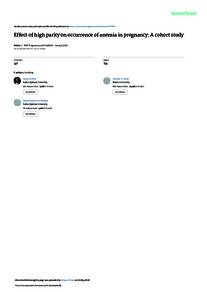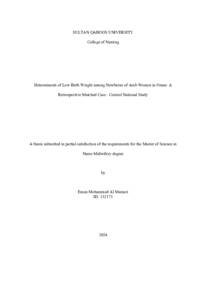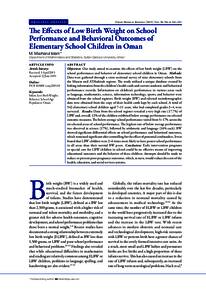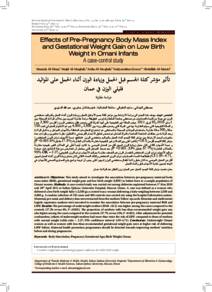Document
Effect of high parity on occurrence of some fetal growth indices : a cohort study.
Identifier
DOI: 10.2147/ijwh.s32190
Contributors
Brooks, Daniel R., Author
Werler, Martha M., Author
Cabral, Howard J., Author
Al-Shafaee, Mohammed A., Author
Wallenburg, Henk C., Author
Publisher
Dove Medical Press.
Gregorian
2012-07
Language
English
English abstract
The objective of this retrospective cohort study was to explore the potential causal relation between parity and fetal growth indices, including low birth weight (LBW), macrosomia, and prematurity. The study was nested on a community trial in a city in Oman. The study analyzed 1939 pregnancies among 479 participants. Of these, 944 pregnancies (48.7%) were high parity (≥5). Obtained newborns with outcomes of interest were as follows: 191 LBW, 34 macrosomic, and 69 premature. Associations were measured using multilevel logistic regression modeling. Compared to low parity (LP, defined as <5), high parity was found to be associated with less risk of LBW (relative risk [RR] = 0.76; 95% confidence interval [CI]: 0.44-1.1) and prematurity (RR = 0.82; 95% CI: 0.54-1.27), but greater risk of macrosomia (RR = 1.8; 95% CI: 1.2-2.4). This study provides evidence that with increasing parity, risks of LBW and prematurity decrease, while risk of macrosomia increases.
Member of
ISSN
1179-1411
Resource URL
Category
Journal articles

